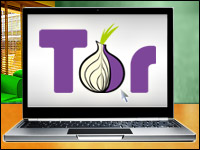
Microsoft is renaming its existing embedded Windows operating systems and supplementing them with additional offerings in key device categories, the company announced Tuesday.
Windows XP Embedded will become Windows Embedded Standard, while Windows Embedded CE will be renamed Windows Embedded Compact. Windows Embedded for Point of Service, meanwhile, will become Windows Embedded POSReady.
Windows Embedded Enterprise, meanwhile, will be an application-compatible embedded operating system that will gradually gain a broader set of embedded enabling features. Today it is composed of Windows Vista and Windows XP for Embedded Systems, and is licensed exclusively for embedded device development.
Embedded operating systems typically are found in consumer electronics, traffic-control systems and medical equipment.
The company announced its rebranding plans at Embedded Systems Conference Silicon Valley 2008 in San Jose, Calif.
Intuitive Presentation
“Our aim is to present the evolving Windows Embedded product family in an intuitive fashion, making it easier for our customers to choose the right platforms and tools for their needs,” said Kevin Dallas, general manager of the Windows Embedded Business at Microsoft. “Windows Embedded solutions for key device categories will energize our partner ecosystem by enabling new business scenarios and help lay the foundation for partners to successfully fulfill our vision of a new generation of smart, connected, service-oriented devices.”
The first renamed product will be Windows Embedded Standard, which will launch on June 3. Windows Embedded Compact and Windows Embedded POSReady will both ship in 2009, until which time they will continue to be sold under their current names.
Microsoft’s new key device category solutions will be offered under the Windows Embedded Ready name and will ship as preconfigured toolkits, giving device manufacturers the market-specific features they need to build next-generation devices. Further details will be released later this year, Microsoft said.
New Certification Program
Microsoft also announced on Tuesday the new Windows Embedded CE 6.0 Certification program, designed to provide a common reference point on the skills and technical expertise that Microsoft recommends for all Windows Embedded CE 6.0 developers. It is the first such program for the Windows Embedded family.
The certification exam will be available on May 5 for US$125 through Prometric testing centers worldwide.
Linux Fears?
As Linux increasingly gains ground in the embedded operating system arena, Microsoft’s rebranding has caused some speculation that the decision was a reaction to that encroachment.
“Certainly in the embedded space Microsoft is worried about Linux,” Greg DeMichillie, a lead analyst at Directions on Microsoft, told LinuxInsider.
“But there are lots of other explanations for why it might rebrand,” DeMichillie asserted. “This is a way to take products without much in common and give them the same name to imply that they have more in common than they really do.”
Different Kernels
Windows XP Embedded and Windows Embedded CE are based on different kernels and are “pretty different operating systems,” he noted. “This is really just an attempt to make Microsoft’s two main embedded offerings look like part of the same family. It probably has more significance to the company than it will to consumers.”
Of course, the whole notion of having an XP Embedded comes out of Microsoft’s attempt to respond to Linux, DeMichillie pointed out. “The big thing that did was let manufacturers take stuff out of the operating system that they didn’t want in their device, and that was done to compete with Linux in the device space.”
The rebranding, however, is not so much a part of that competition, he said. “A product family that scales from small to large sounds better than saying ‘we have two different operating systems.”
‘Just a Branding Issue’
Indeed, “clarity in branding is always a good thing in the market, and to me the rebranding seems to make sense,” Raven Zachary, research director for the open source practice at the 451 Group, told LinuxInsider.
“I’d be hesitant to read too much into the Linux angle here,” he cautioned. “Companies do this sort of thing — it’s just part of aligning products for the market. It’s not a considerable strategic shift, just a branding issue.”
Linux has definitely been growing in the embedded systems market, and “will compete more and more with proprietary embedded systems,” Zachary concluded. “But I don’t think it’s a short-term concern for Microsoft in terms of how it brands its products.”




















































